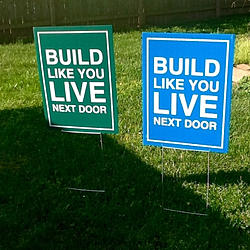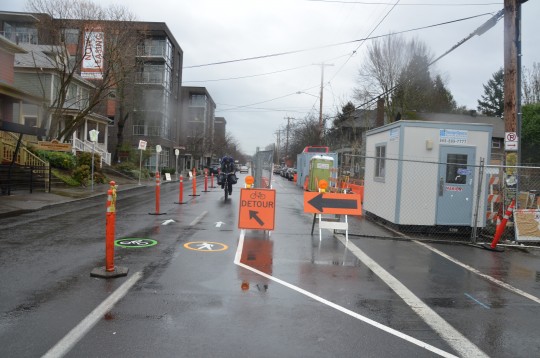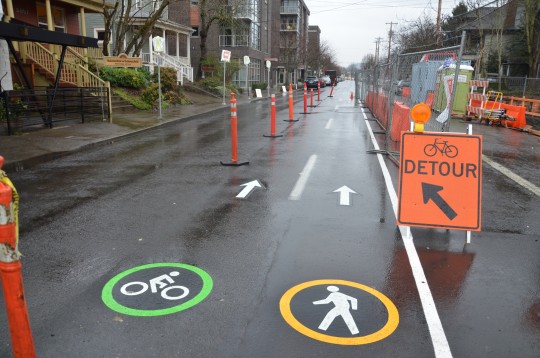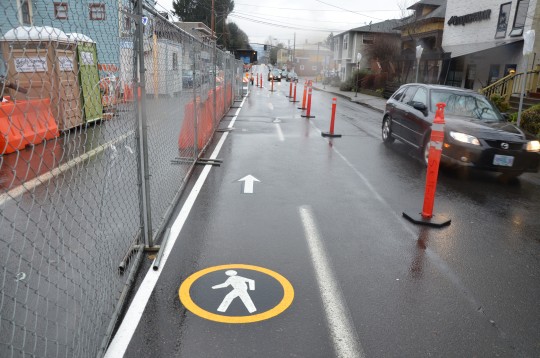
What is the recipe for living a long, healthy, happy life? Dan Buettner has been researching this for nearly a decade. (Pixabay)
For nearly a decade, Dan Buettner has been researching so-called Blue Zones – those areas of the world where people live longer, healthier and happier than anywhere else on the planet.
After identifying where the zones are (Ikaria, Greece; Okinawa, Japan; parts of Sardinia; Loma Linda, California; and Nicoya, Costa Rica), Buettner proceeded to study the factors that appear to contribute the residents’ longevity. And then, he took it a step further, founding the
Blue Zones Project, the largest preventive health care initiative in the United States, so far estimated to have reached 5 million people.
Funded largely by insurance companies, the Blue Zones Project focuses on restructuring communities so that healthy choices are also easy choices. Changes might include new sidewalks, establishing friendship groups, re-arranging supermarkets to highlight healthy foods, and even reorganizing family kitchens.
The results have been dramatic: In Albert Lea, Minnesota, the average life expectancy rose by nearly three years and health care costs for city workers there dropped by 40 percent. In Spencer, Iowa, health care costs for city workers dropped by 25 percent. And in the Beach Cities, California, smoking rates declined by nearly 30 percent.
Book Excerpt: ‘The Blue Zones Solution’
Introduction: Discovering the Blue Zones Solution
Superfoods by 'Blue Zone'
Ikaria, Greece
Olive Oil
Wild Greens
Potatoes
Feta Cheese
Black-Eyed Peas
Chickpeas
Lemons
Mediterranean Herbs
Coffee
Honey
Okinawa, Japan
Bitter Melons
Tofu
Sweet Potatoes
Garlic
Turmeric
Brown Rice
Green Tea
Shiitake Mushrooms
Seaweed
Ogliastra region, Sardinia
Goat’s and sheep’s milk
Flat Bread
Barley
Sourdough Bread
Fennel
Fava Beans and Chickpeas
Tomatoes
Almonds
Milk Thistle
Cannonau Wine
Loma Linda, California
Avocados
Salmon
Nuts
Beans
Water
Oatmeal
Whole Wheat Bread
Soy Milk
Nicoya Peninsula, Costa Rica
Maize Nixtamal
Squash
Papayas
Yams
Black Beans
Bananas
Pelivalles
SECRETS OF LIVING LONG
For more than a decade I’ve been working with the National Geographic Society to identify hot spots of longevity around the world—areas we called Blue Zones because a team of researchers had once circled a target region on a map with blue ink. Teaming up with demographer Michel Poulain, I set out to find the world’s longest-lived people. We wanted to locate places that had not only high concentrations of 100-year-olds but also clusters of people who had grown old without diseases like heart problems, obesity, cancer, or diabetes. Poulain did extensive data analysis and research and pinpointed several regions in the world that appeared to have long-lived people. We needed to visit them to check birth and death records to confirm that these individuals were really as old as they thought they were.
By 2009 we had found five places that met our criteria:
- IKARIA, GREECE An island in the Aegean Sea eight miles off the coast of Turkey that has one of the world’s lowest rates of middle-age mortality and the lowest rates of dementia
- OKINAWA, JAPAN The largest island in a subtropical archipelago, home to the world’s longest-lived women
- OGLIASTRA REGION, SARDINIA The mountainous highlands of an Italian island that boast the world’s highest concentration of centenarian men
- LOMA LINDA, CALIFORNIA A community with the highest concentration of Seventh-day Adventists in the United States, where some residents live ten more healthy years than the average American
- NICOYA PENINSULA, COSTA RICA A place in this Central American country where residents have the world’s lowest rates of middle-age mortality and the second highest concentration of male centenarians
To tease out the factors that contributed to longevity in these places, we assembled a team of leading medical researchers, anthropologists, dietitians, demographers, and epidemiologists. Piece by piece, we put together our working theories, collaborating with local researchers who were studying centenarians, cross-checking with academic papers, and interviewing a representative sample of 90- and 100-year-olds in each Blue Zone.
I found it especially helpful during my 20 or so trips to the Blue Zones to spend time just sitting with 100-year-olds and listening to their stories and paying attention to their lives. I watched as they prepared their meals, and I ate when and what they were used to eating. I knew that these people were doing something right—it wasn’t just that they had won the genetic lottery. But what was it?
Remarkably, no matter where I found long-lived populations, I found similar habits and practices at work. When we asked our team of experts to identify these common denominators, they came up with these nine lessons, which we call thePower Nine:
- Move Naturally. The world’s longest-lived people don’t pump iron, run marathons, or join gyms. Instead, they live in environments that constantly nudge them into moving. They grow gardens and don’t have mechanical conveniences for house and yard work. Every trip to work, to a friend’s house, or to church occasions a walk.
- Purpose. The Okinawans call it ikigai and the Nicoyans call it plan de vida; for both it translates to “why I wake up in the morning.” In all Blue Zones people had something to live for beyond just work. Research has shown that knowing your sense of purpose is worth up to seven years of extra life expectancy.
- Down Shift. Even people in the Blue Zones experience stress, which leads to chronic inflammation, associated with every major age-related disease. The world’s longest-lived people have routines to shed that stress: Okinawans take a few moments each day to remember their ancestors, Adventists pray, Ikarians take a nap, and Sardinians do happy hour.
- 80 Percent Rule. Hara hachi bu—the 2,500-year-old Confucian mantra spoken before meals on Okinawa—reminds people to stop eating when their stomachs are 80 percent full. The 20 percent gap between not being hungry and feeling full could be the difference between losing weight and gaining it. People in the Blue Zones eat their smallest meal in the late afternoon or early evening, and then they don’t eat any more the rest of the day.
- Plant Slant. Beans, including fava, black, soy, and lentil, are the cornerstone of most centenarian diets. Meat—mostly pork—is eaten on average only five times per month, and in a serving of three to four ounces, about the size of a deck of cards.
- Wine @ 5. People in all Blue Zones (even some Adventists) drink alcohol moderately and regularly. Moderate drinkers outlive nondrinkers. The trick is to drink one to two glasses per day with friends and/or with food. And no, you can’t save up all week and have 14 drinks on Saturday.
- Belong. All but five of the 263 centenarians we interviewed belonged to a faith-based community. Denomination doesn’t seem to matter. Research shows that attending faith-based services four times per month will add 4 to 14 years of life expectancy.
- Loved Ones First. Successful centenarians in the Blue Zones put their families first. They keep aging parents and grandparents nearby or in the home, which also lowers disease and mortality rates of their children. They commit to a life partner (which can add up to three years of life expectancy), and they invest in their children with time and love, which makes the children more likely to be caretakers when the time comes.
- Right Tribe. The world’s longest-lived people choose, or were born into, social circles that support healthy behaviors. Okinawans create moais—groups of five friends that commit to each other for life. Research shows that smoking, obesity, happiness, and even loneliness are contagious. By contrast, social networks of long-lived people favorably shape their health behaviors.
EATING THE BLUE ZONES WAY
You might be reading this now and saying, All these stories about the Blue Zones are fine, but I don’t live on an island in the Mediterranean, and you haven’t come to my hometown yet. Or you might be saying, I live in a town where fast-food restaurants abound, and I’m busy with family and work and trying to stay on a budget. Grocery store vegetables often look limp and are still expensive. Stores that carry plenty of good, healthy food are few and far away. It’s much easier and cheaper to stop at the burger or pizza restaurant. You might be saying, I live in a place built for cars. I drive to work, to the store, to my place of worship; things are spread out. There’s stress-inducing and sometimes dangerous traffic. My friends are busy, too, and they live a long way from me. I don’t have time to get together for dinner. How can I be expected to eat and live like people in the Blue Zones? It’s not realistic
The Blue Zones Solution offers an alternative—food ideas and eating practices, plus ways to change your environment that make it all the more likely that you will live a longer, healthier life. We’ve adapted the lessons from the original Blue Zones, piloted the lifestyle changes in real communities, and translated the actual foods into easy, doable recipes designed for every taste and family—kids included—and die-hard meat-and-potato lovers too. We want you to love what you eat, how you spend your day, and the people around you. We want you to feel your life is getting better and better, whether you start by embracing the Blue Zones Solution on a small-scale at home or are inspired to get involved in transforming your whole neighborhood, extended family, town, or city.
Watch Dan Buettner's TED Talk:
Guest
- Dan Buettner, author of “The Blue Zones Solution: Eating and Living Like the World’s Healthiest People.” He tweets @BlueZones.




































